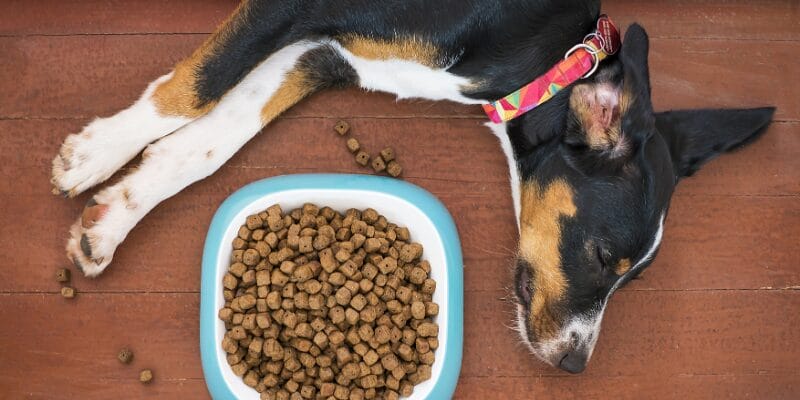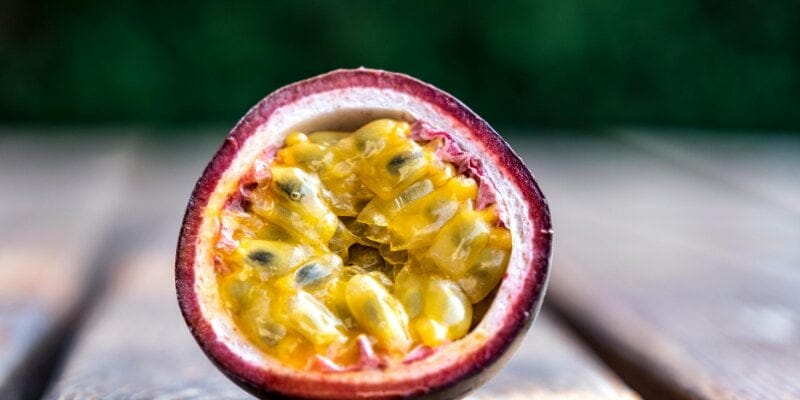How Long Can Wet Dog Food Sit Out

“Avoiding Risks: Best Practices for How Long Can Wet Dog Food Sit Out.”
Many pet owners wonder, “How long can wet dog food sit out?” Once that can or pouch is opened, the clock starts ticking. In general, it’s recommended not to leave wet dog food unattended for more than 2 hours, especially if the ambient temperature is above 50°F. Beyond this timeframe, there’s an increased risk of harmful bacterial growth, potentially jeopardizing your pet’s health.
The key is to be mindful of the clock and environmental conditions. So, the next time you serve up a portion of wet dog food for your furry friend, keep an eye on the clock to ensure that every meal is not only delicious but also safe and healthy. Once a can or pouch is opened, wet dog food can stay good for a few days, usually within the range of 3 to 5 days. Opened cans must be promptly refrigerated, maintaining a temperature range of 40-45°F.
Key Factors to Consider:
Packaging Matters:
The type of packaging plays a significant role in determining how long wet dog food can sit out. Sealed cans and pouches are designed to maintain freshness, but once opened, the clock starts ticking.
Temperature and Environment:
The temperature of the surroundings is crucial. Wet dog food should not be left out in warm or hot environments, as higher temperatures can accelerate bacterial growth.
Time Limit:
As a general guideline, it is recommended not to leave wet dog food out for more than 2 hours. After this point, harmful bacteria could multiply to levels that may pose a risk to your dog’s health.
Best Practices:
Refrigeration is Key:
If your dog doesn’t finish the entire serving, refrigerate the remaining wet dog food promptly. Storing it at a cool temperature slows down bacterial growth and helps maintain its quality.
Follow Feeding Guidelines:
Always follow the feeding guidelines provided by the dog food manufacturer. This includes information on storage, serving sizes, and recommended handling practices.
Inspect Before Serving:
Before feeding your dog, inspect the wet food for any signs of spoilage, such as an unusual odor, change in color, or the presence of mold. If you notice any of these signs, it’s safer to discard the food.
“How long can wet dog food sit out?” This query is crucial for maintaining the health and happiness of our furry friends. Join us as we unravel the mystery behind the shelf life of wet dog food.
What Is Wet Dog Food?
Wet dog food is a type of pet food that comes in sealed cans or pouches, containing a higher moisture content compared to dry kibble. It’s often preferred for its palatability and can be a good option for dogs with dental issues or those needing extra hydration. The texture and aroma of wet dog food make it an enticing choice for many dogs.
How Long Can I Leave Wet Dog Food Out?
Have you ever wondered how long it’s safe to leave wet dog food out for your dog? Once that can or pouch is opened, the clock starts ticking, and it’s crucial to pay attention. In general, it’s recommended not to leave wet dog food unattended for more than 2 hours, especially in warmer temperatures. Beyond this timeframe, the risk of harmful bacterial growth increases, potentially compromising the safety of the food for your pet. This duration may vary based on factors like packaging, ambient temperature, and adherence to feeding guidelines.
Being mindful of these aspects ensures that each serving of wet dog food is not only delicious but also safe and healthy for your canine companion. Responsible pet care involves keeping an eye on the clock and promptly storing any leftover wet dog food to maintain its freshness.
Wet vs Dry
Wet and dry dog foods have distinct characteristics. While wet food offers higher moisture content and enhanced palatability, dry kibble is convenient, has a longer shelf life, and can contribute to dental health. The choice between wet and dry often depends on your dog’s preferences, health needs, and lifestyle.
Here’s a simple table comparing wet and dry dog food:
| Aspect | Wet Dog Food | Dry Dog Food |
|---|---|---|
| Moisture Content | Higher moisture content, around 70-85%. | Lower moisture content, typically 10-12%. |
| Texture | Soft and palatable, suitable for all dogs. | Crunchy texture, promotes dental health. |
| Shelf Life | Shorter shelf life once opened, refrigerate promptly. | Longer shelf life, convenient for storage. |
| Convenience | Convenient for picky eaters, easy to mix with other foods. | Convenient, doesn’t require refrigeration. |
| Nutrient Density | May have a higher protein and fat content. | Concentrated nutrients due to low moisture. |
| Dental Health | Suitable for dogs with dental issues or those needing extra hydration. | Promotes dental health by encouraging chewing. |
| Variety | Available in various flavors and formulations. | Comes in a wide range of kibble shapes and sizes. |
| Cost | Can be more expensive per serving. | Generally more cost-effective. |
Understanding these differences helps pet owners make informed decisions based on their dog’s preferences, health needs, and lifestyle.
Does Wet Dog Food Need to Be Refrigerated?
One common query among pet owners is whether wet dog food needs to be refrigerated. The answer is a resounding yes, especially once the can or pouch is opened. Refrigeration is crucial to prevent bacterial growth and maintain the freshness of the food. Unlike dry kibble, wet dog food’s higher moisture content creates an environment that can lead to spoilage if left unrefrigerated. To ensure the safety of your furry friend’s meals, it’s essential to promptly refrigerate any opened wet dog food and follow the manufacturer’s storage guidelines. Responsible pet care involves being mindful of these storage practices, guaranteeing that every serving is not only tasty but also safe for your dogs.
Does Opened Wet Dog Food Need to Be Refrigerated?
Once you’ve opened a can or pouch of wet dog food, refrigeration becomes a crucial step in ensuring the safety and freshness of the remaining portions. Yes, opened wet dog food definitely needs to be refrigerated. The higher moisture content in wet food makes it susceptible to bacterial growth at room temperature, potentially compromising its quality and safety for your pet. By promptly placing any unused portions in the fridge, you slow down the growth of harmful bacteria and extend the shelf life of the opened can or pouch. Responsible pet owners understand the importance of following these storage practices to guarantee that each meal served is not only tasty but also safe and wholesome.
Can I Leave Wet Dog Food Out Overnight?
Leaving wet dog food out overnight is not advisable for the well-being of your pet. The general recommendation is to avoid leaving it unattended for more than 2 hours, especially in warmer temperatures. Overnight exposure provides an extended period for bacteria to multiply, potentially compromising the safety and freshness of the food. To ensure your furry friend’s health, it’s best to refrigerate any leftover wet dog food promptly. This practice helps slow down bacterial growth and maintains the quality of the food.
How to Store Wet Dog Food
Properly storing wet dog food is key to keeping your pet’s meals fresh and safe. Once the can or pouch is opened, it’s crucial to seal it tightly and promptly refrigerate any unused portions. This helps slow down bacterial growth and preserves the food’s integrity. Avoid leaving opened wet dog food at room temperature for extended periods, as its higher moisture content makes it more susceptible to spoilage. Adhering to the manufacturer’s storage guidelines is essential to ensure your furry friend receives the best nutrition without compromising their health.
How Long Will Wet Dog Food Stay Good Once It’s Open?
When it comes to opened wet dog food, understanding its shelf life is crucial for your pet’s well-being. Typically, once a can or pouch is opened, wet dog food can stay good for a few days, usually within the range of 3 to 5 days. However, it’s essential to consult the specific product’s guidelines, as shelf life may vary. Refrigeration is a key factor in preserving the freshness of opened wet dog food, as it helps slow down bacterial growth.
Always be vigilant about expiration dates and adhere to the recommended storage durations to ensure your dog enjoys safe and nutritious meals. Responsible pet care involves keeping a close eye on these details, guaranteeing that each serving is not just tasty but also maintains its quality for your friend.
Storing Canned Dog Food
Storing canned dog food correctly is crucial to keep your pet’s meals safe and nutritious. Find a cool, dry place to store unopened cans, avoiding exposure to extreme temperatures. Always check for any signs of damage or bulging before serving the food to your pet. Once a can is opened, it’s essential to refrigerate any unused portions promptly. Refrigeration helps maintain the quality and safety of the canned dog food by slowing down bacterial growth.
While canned dog food generally has a longer shelf life than wet food, following proper storage practices is fundamental for ensuring your furry friend receives meals that are not only delicious but also safe and wholesome. Responsible pet owners understand the significance of these steps, guaranteeing the well being of their canine companions with every meal served.
How to Tell if Canned Dog Food is Good
Before serving, conduct a visual and olfactory inspection. Check for any unusual odors, changes in color, or signs of mold. If you notice any of these indicators, it’s best to discard the canned dog food. Trust your senses; if something seems off, prioritize your pet’s health by opting for a fresh can. Responsible pet care involves being vigilant about the condition of the food you provide, ensuring that each meal is not only appetizing but also safe for your furry friend. Regularly checking the canned dog food for any signs of spoilage is a simple yet crucial practice in maintaining the well-being of your canine companion.
How Long Can Wet Dog Food Stay in the Fridge?
Understanding the shelf life of wet dog food in the fridge is key. Once that can or pouch is opened, the clock starts ticking, and refrigeration becomes paramount. Typically, wet dog food can stay in the fridge for a few days, usually within the range of 3 to 5 days, depending on the specific product and manufacturer’s recommendations. This cooling period slows down bacterial growth, preserving the freshness of the food. However, it’s essential to keep a watchful eye on the expiration date provided by the manufacturer and adhere to it strictly. Always prioritize your pet’s health by following proper storage guidelines and promptly discarding any wet dog food that surpasses its recommended fridge life.
Why Does Wet Dog Food Spoil Faster Than Dry?
Have you ever wondered why wet dog food seems to have a shorter shelf life compared to its dry counterpart? The answer lies in its higher moisture content. The increased water content creates an environment conducive to bacterial growth, making wet dog food more prone to spoilage. Unlike dry kibble, which has lower moisture levels and acts as a natural preservative, the added water in wet food provides an ideal breeding ground for bacteria. This makes proper storage and prompt refrigeration crucial to slow down the potential for spoilage. Understanding the science behind this helps us make informed choices for our pets, ensuring that every meal is not just tasty but also safe and healthy.

What Should I Do With Uneaten Wet Dog Food?
What to do with uneaten wet dog food is a common concern for pet owners aiming to provide the best for their furry companions. If your dog doesn’t finish the meal within the recommended time frame, it’s crucial to act promptly. Uneaten wet dog food should be refrigerated as soon as possible to slow down bacterial growth and maintain its freshness. Avoid leaving it out for extended periods, and always adhere to the storage guidelines provided by the manufacturer.
Responsible pet ownership involves discarding any uneaten portions that surpass the recommended storage duration to prioritize your dog’s health. By managing uneaten wet dog food conscientiously, you ensure that each meal is not just delicious but also safe for your four-legged friend.
Can Wet Dog Food Sit Out Like Kibble?
Unlike dry kibble, wet dog food should not be left out for extended periods. Its higher moisture content makes it more susceptible to bacterial growth at room temperature. Always adhere to the recommended time limits to ensure your pet’s well being.
Conclusion
In the realm of responsible pet ownership, the question of “How long can wet dog food sit out?” underscores the importance of informed decision-making. By considering packaging, environmental factors, and adhering to recommended time limits, pet owners can ensure their dogs receive optimal nutrition without compromising their health. Remember, when it comes to our beloved pets, their well being takes precedence in every aspect of care.
FAQs About “How long can wet dog food sit out”
Q: How long can wet dog food sit out?
A: Wet dog food should not be left out for more than 2 hours to prevent potential bacterial growth. In warmer temperatures, this time limit decreases, emphasizing the importance of prompt refrigeration.
Q: Is it OK to leave wet dog food out all day?
A: Leaving wet dog food out all day is not advisable. Extended exposure increases the risk of bacterial contamination, potentially compromising the safety and freshness of the food.
Q: What happens if a dog eats wet food left out overnight?
A: If a dog consumes wet food left out overnight, there is an increased risk of bacterial ingestion, potentially leading to digestive issues or foodborne illnesses. It’s crucial to prioritize the freshness and safety of your pet’s meals.
Q: How long is wet dog food good for once opened?
A: Once opened, wet dog food typically remains good for a few days, usually within the range of 3 to 5 days. Refrigeration is key to slowing down bacterial growth and preserving the quality of the food.
Q: How long is soaked dog food good for?
A: Soaked dog food should be consumed within a reasonable timeframe, preferably within a few hours. The moisture content makes it susceptible to bacterial growth, necessitating prompt consumption to ensure freshness and safety.






